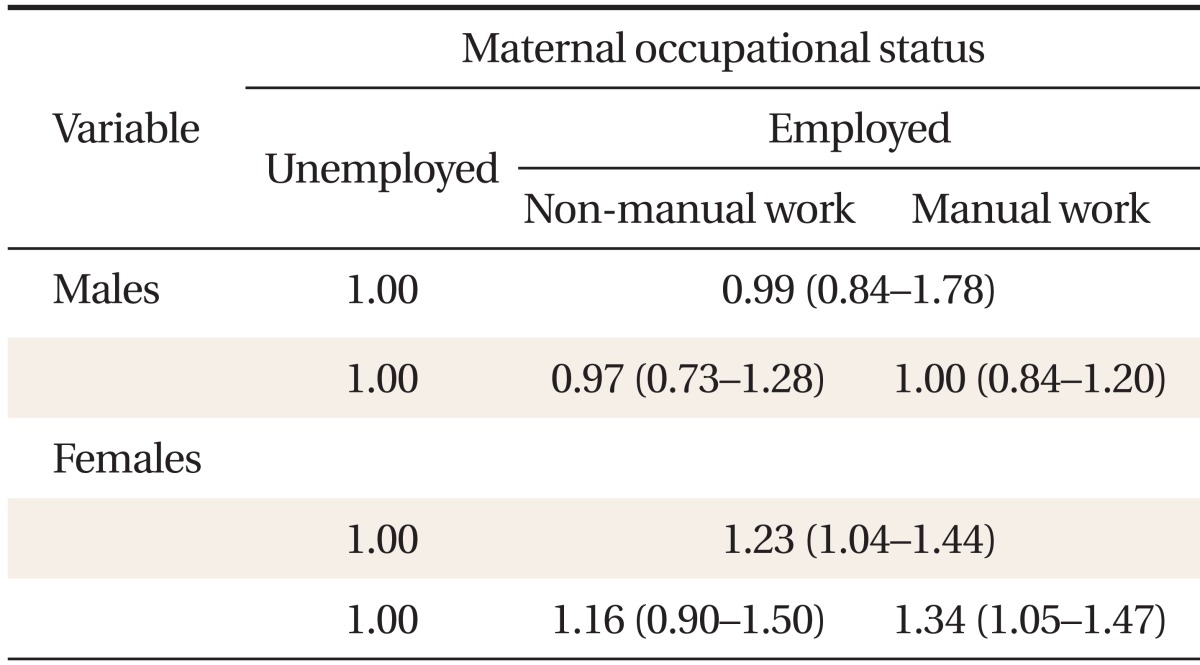Table 4.
Odds ratios and 95% confidence intervals for metabolic syndrome, according to maternal occupational status*

Metabolic syndrome was defined as the presence of three or more of the following conditions: waist circumference ≥ 90 cm in males and ≥ 85 cm in females; fasting glucose ≥ 100 mg/dL or the use of insulin or hypoglycemic medications; systolic blood pressure ≥ 130 mm Hg, diastolic blood pressure ≥ 85 mm Hg, or the use of anti-hypertensive medication; triglycerides ≥ 50 mg/dL; and high density lipoprotein cholesterol < 40 mg/dL in males or < 50 mg/dL in females. Maternal occupational status was categorized based on the response to the question: "Did your mother have an occupation when you were 14 years old?" If the answer was yes, they were categorized as employed; if the answer was no, they were categorized as unemployed. Occupations were classified as manual or non-manual using the Registrar General's classification.20) Professional, managerial, and semi-skilled non-manual occupations (e.g., legislators, senior officials and managers, professionals, technicians and associate professionals, clerks, service workers, and shop and market sales workers) were categorized as non-manual. Semi-skilled manual, partly skilled, and unskilled occupations (e.g., agricultural and fishery workers, craft and related workers, plant and machine operators and assemblers, and elementary occupations) were categorized as manual. Housewives were categorized as unemployed.
*Adjusted for age, alcohol consumption, smoking status, exercise status, area of residence, daily fat intake, current daily household income, and maternal education level.
